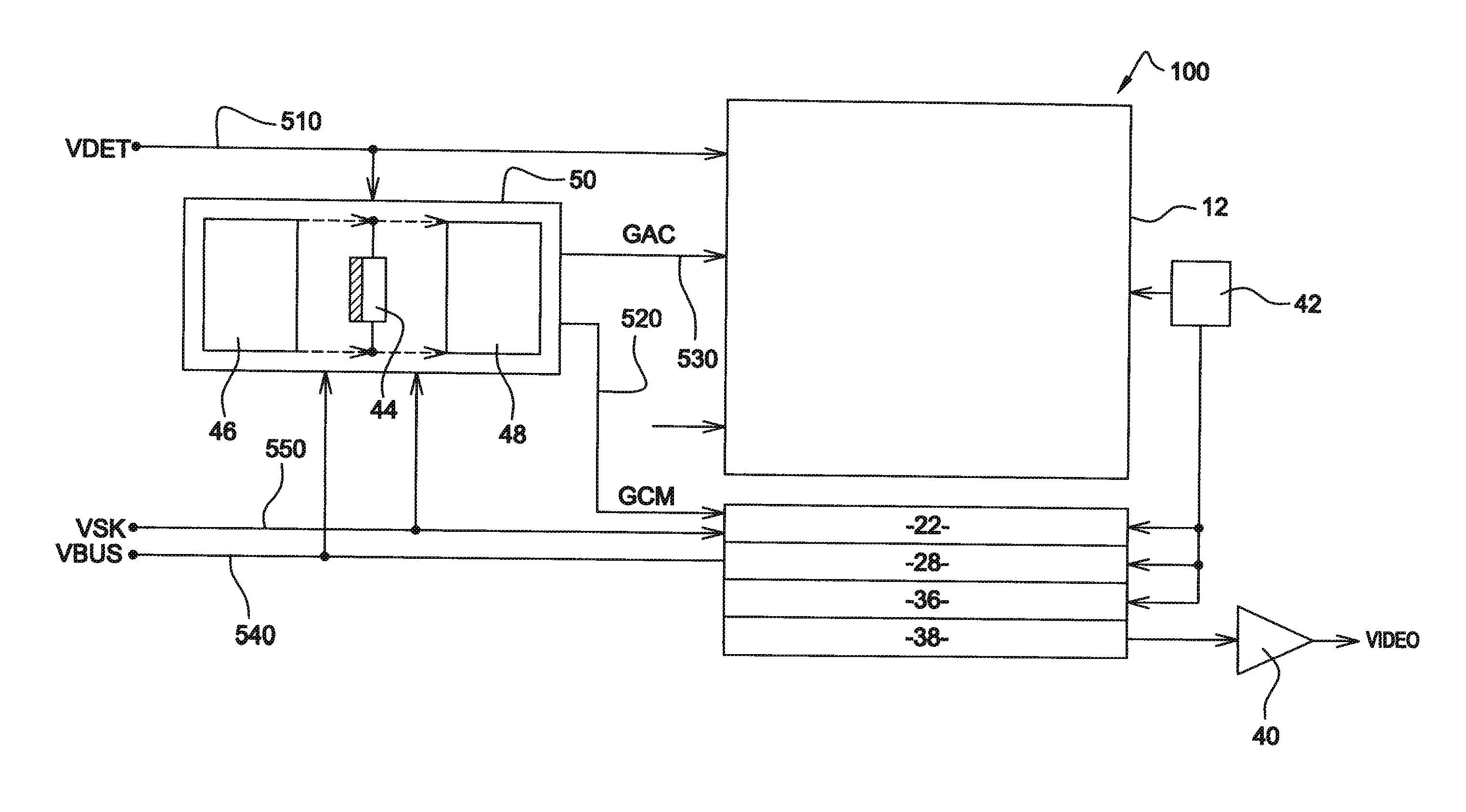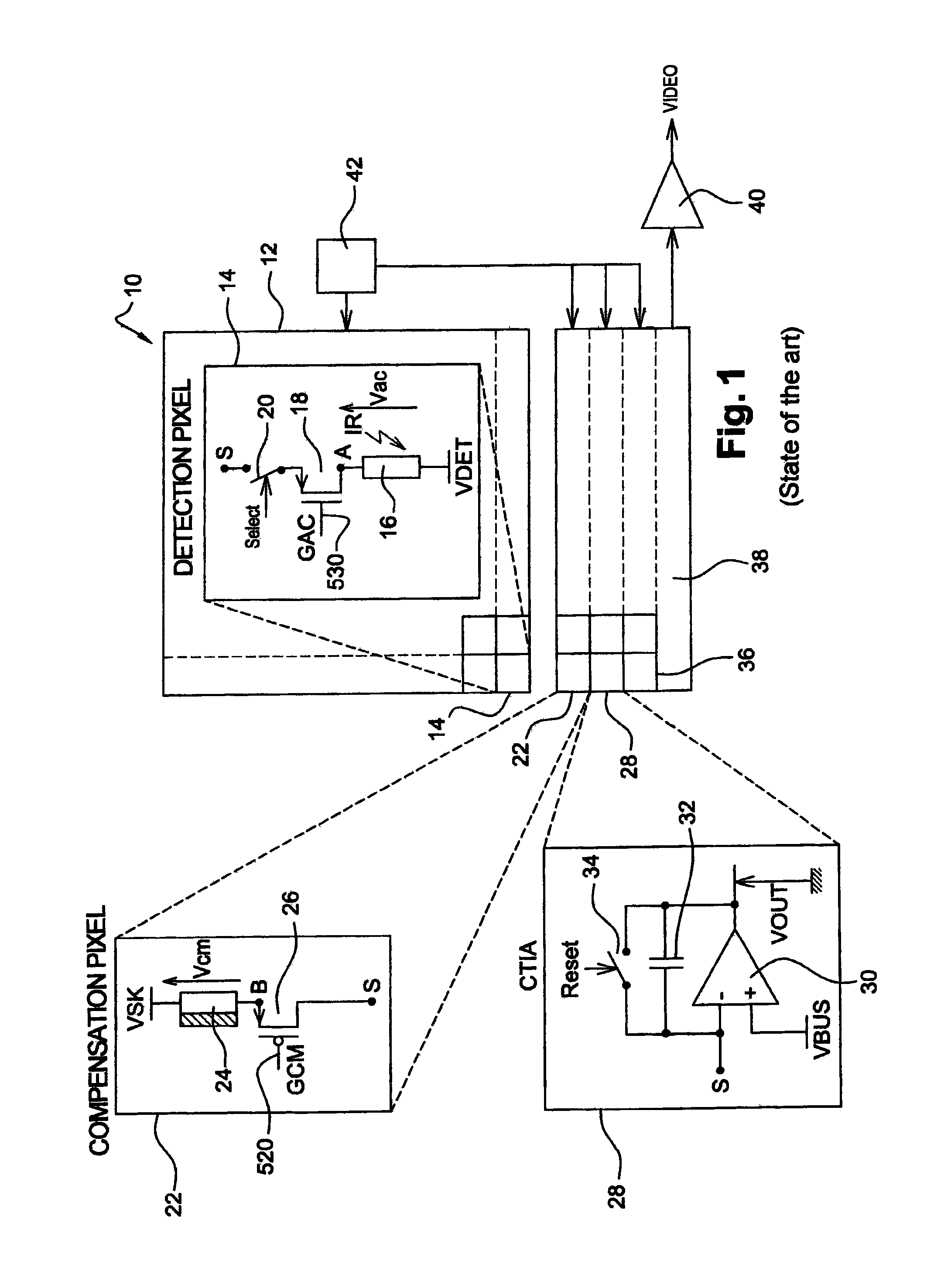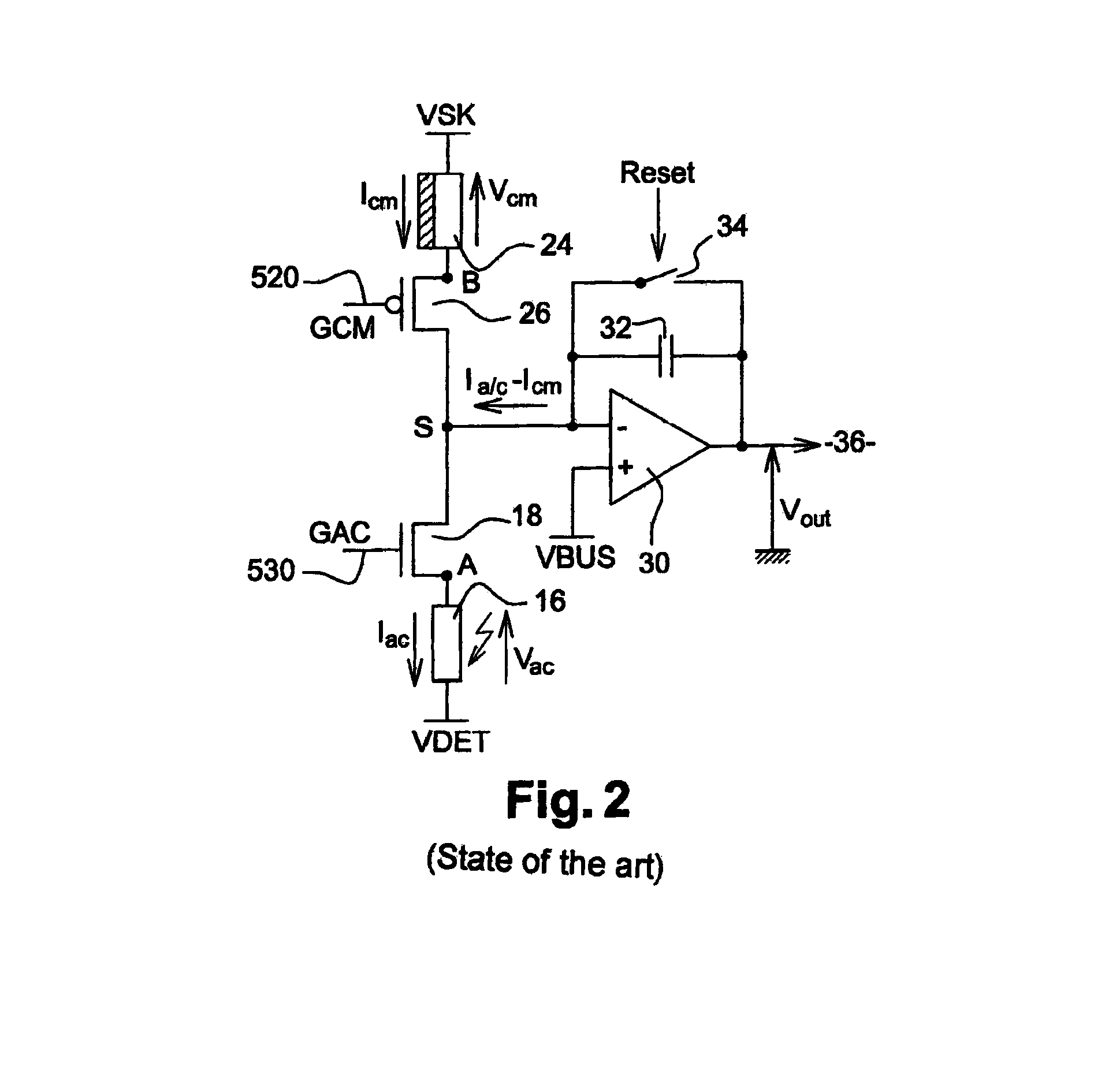Bolometric Detector With A Temperature-Adaptive Biasing
a detector and temperature-adaptive technology, applied in the field of bolometric infrared imaging and pyrometry, can solve the problems of limiting the performance of the detector, affecting the accuracy of the detector, and drowning of useful signals relative to the scene in this background component, so as to improve the signal-to-noise ratio performance and improve the manufacturing cost
- Summary
- Abstract
- Description
- Claims
- Application Information
AI Technical Summary
Benefits of technology
Problems solved by technology
Method used
Image
Examples
first embodiment
[0149]FIG. 4 illustrates analog circuit 50 for controlling the gate voltages of biasing transistors 18 and 26. Circuit 50 is powered at its input between potentials VSK, carried by a power supply line 550, and VDET, carried by a power supply line 510, and outputs voltages GCM and GAC respectively conveyed by control buses 520 and 530.
[0150]Circuit 50 comprises three parallel current branches 52, 54, and 56 connected between voltage VSK and voltage VDET. Circuit 50 is driven from branch 56, formed of a programmable constant current generator 563 for example, over 3 bits, which injects a constant current I1 into branch 56 through a first MOS transistor 561 and series-connected resistors 512c and 562.
[0151]“Constant current”, means that nominally, there is no need to modify current I1 for the detector to operate according to the invention over the entire envisaged temperature range. It should however be clear that for reasons unconnected to the context of the invention, it may be usefu...
second embodiment
[0204]FIG. 7 is an electric diagram of circuit 50 for controlling the gate voltages of bias transistors 18 and 26 of detection and compensation bolometers 16 and 24.
[0205]The second embodiment comprises, like the first embodiment, current branches 54, 56 and operational amplifiers 531, 532. Unlike the first embodiment, which comprises third current branch 52, in the second embodiment, the outputs of operational amplifier 531, 532 are looped in follower mode onto their inverting inputs to reproduce potentials VB′ and VA′ across MOS transistor 541, and respectively connected to control buses 530, 520.
[0206]Circuit 100 according to the second embodiment comprises two direct-injection buffers 160, 260 connected to buses 530, 520 and to bias transistors 18, 26 of detection bolometer array 12. More specifically, buffers 160, 260 each comprise an operational amplifier having its non-inverting inputs respectively connected to control buses 530, 520. The inverting input and the output of ope...
third embodiment
[0210]According to this third embodiment, circuit 50 is associated with a CTIA integrator 28b totally similar to the CTIA integrators 28 installed at the end of each column of the usual read circuit. Potential VBUS is applied to median point C of circuit 50 via the non-inverting input of the amplifier of integrator 28b. Integrator 28b is reset to zero after each reading of a line of array 12 of detection bolometers 16 by the same control signal Reset as integrators 28b, applied to the controllable switch of integrator 28b. The output of integrator 28b is transmitted to a video amplifier 40b, identical to video amplifier 40, via a sample-and-hold device 36b, identical to sample-and-hold devices 36 and activated in phase therewith. Amplifier 40b, for example of follower amplifier type, outputs a reference signal Video-ref corresponding to the integration of the differential current I522−I521 of half-branches 521, 522 of branch 52 previously described in relation with FIG. 4. More spec...
PUM
 Login to View More
Login to View More Abstract
Description
Claims
Application Information
 Login to View More
Login to View More - R&D
- Intellectual Property
- Life Sciences
- Materials
- Tech Scout
- Unparalleled Data Quality
- Higher Quality Content
- 60% Fewer Hallucinations
Browse by: Latest US Patents, China's latest patents, Technical Efficacy Thesaurus, Application Domain, Technology Topic, Popular Technical Reports.
© 2025 PatSnap. All rights reserved.Legal|Privacy policy|Modern Slavery Act Transparency Statement|Sitemap|About US| Contact US: help@patsnap.com



